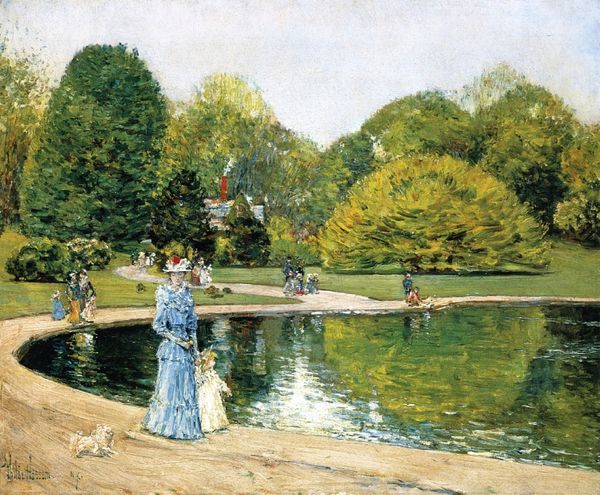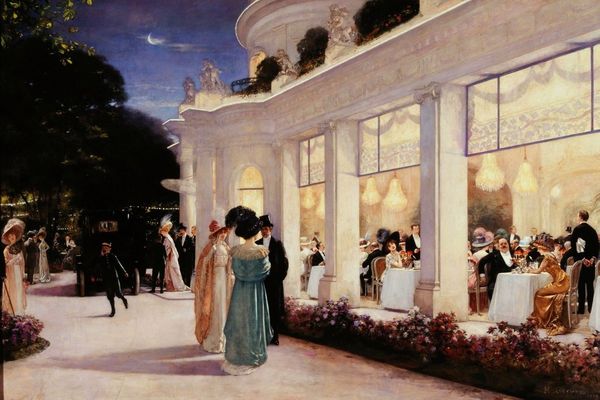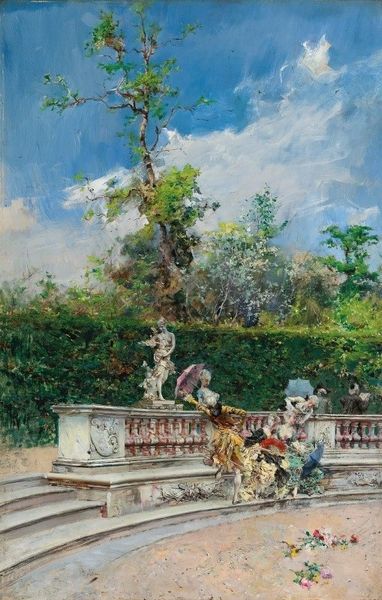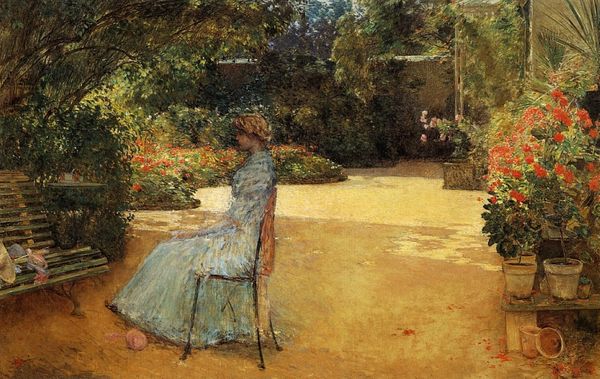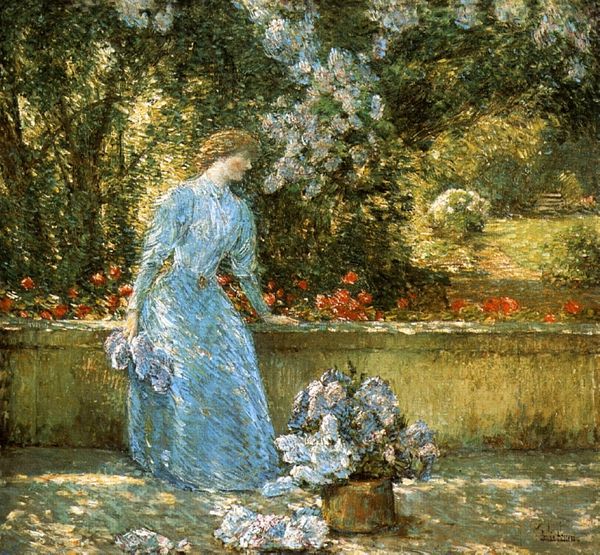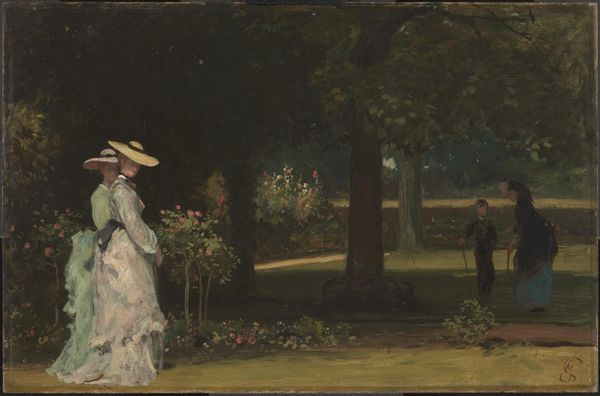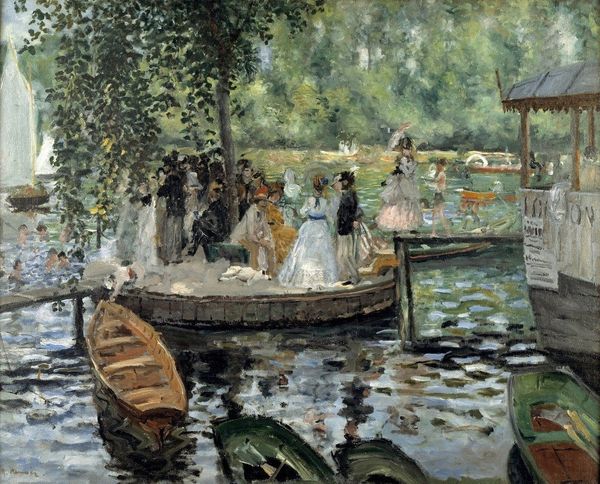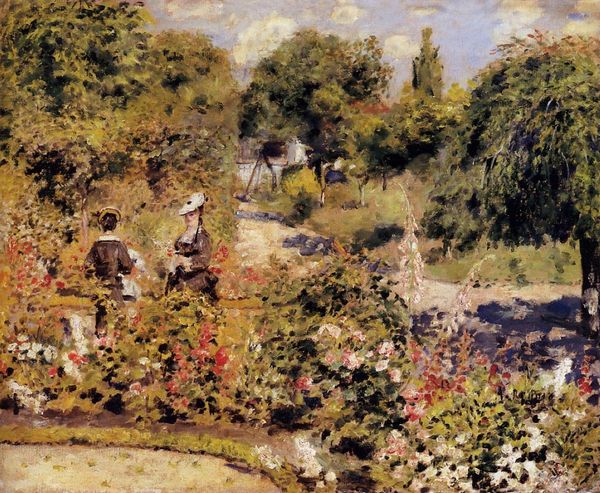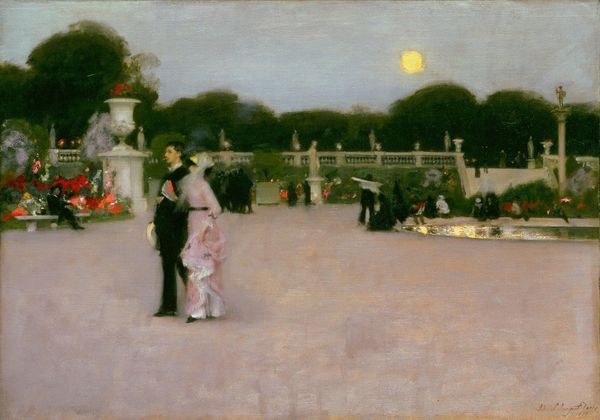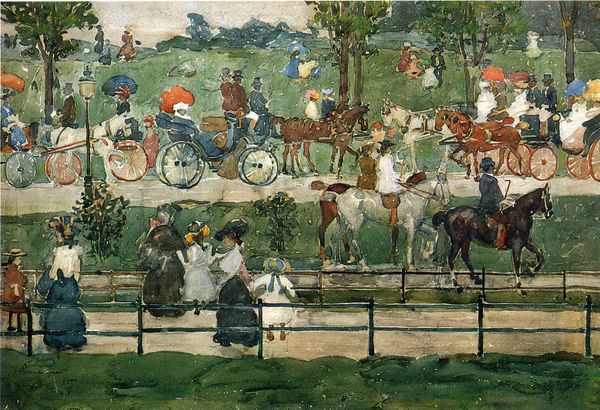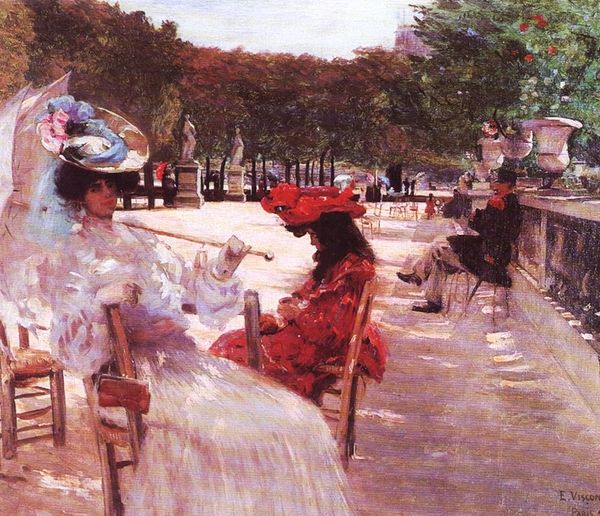
Dimensions: 19 x 28 cm
Copyright: Public domain
Editor: Here we have Giovanni Boldini’s "Gallant Scene," painted in 1877. It's an oil painting, portraying a group of elegantly dressed figures in what seems like a formal garden. It feels very staged and theatrical, almost like a scene from an opera. What’s your take on this, especially concerning its place in the art world? Curator: What strikes me immediately is the clear self-awareness of performance embedded within the scene. Boldini presents us with a tableau vivant, but one heavily mediated by the social conventions of the late 19th century. Think about the rise of the bourgeoisie, their obsession with leisure, and their desire to emulate aristocratic lifestyles. This painting doesn't simply depict; it performs the *idea* of aristocratic leisure. Editor: So, it’s less about a realistic portrayal and more about conveying a societal aspiration? Curator: Precisely. Notice how Boldini emphasizes the artificiality of the setting – the meticulously manicured garden, the statues, even the swan pond seems too perfect. It's a constructed paradise intended for display, not genuine enjoyment. Editor: That’s a fascinating point. How did these sorts of staged scenes play into the art market at the time? Curator: Paintings like these became commodities, status symbols reflecting the tastes and aspirations of their owners. Owning a “Gallant Scene” suggested an alignment with a certain level of refinement and social standing. The image circulated publicly, both reinforcing and shaping these desires, almost functioning as an early form of advertising for an ideal lifestyle. Look closely; what kind of messages does it seem to promote? Editor: Hmm, that it's important to present yourself with such elegance, leisure and refinement? I never considered how pointedly it reflects cultural aspirations through the public reception and political forces surrounding its creation. Thank you! Curator: It’s a useful reminder that artworks don't exist in a vacuum, and are always in conversation with social dynamics of their time. We can see the social fabric imprinted on the canvas.
Comments
No comments
Be the first to comment and join the conversation on the ultimate creative platform.
